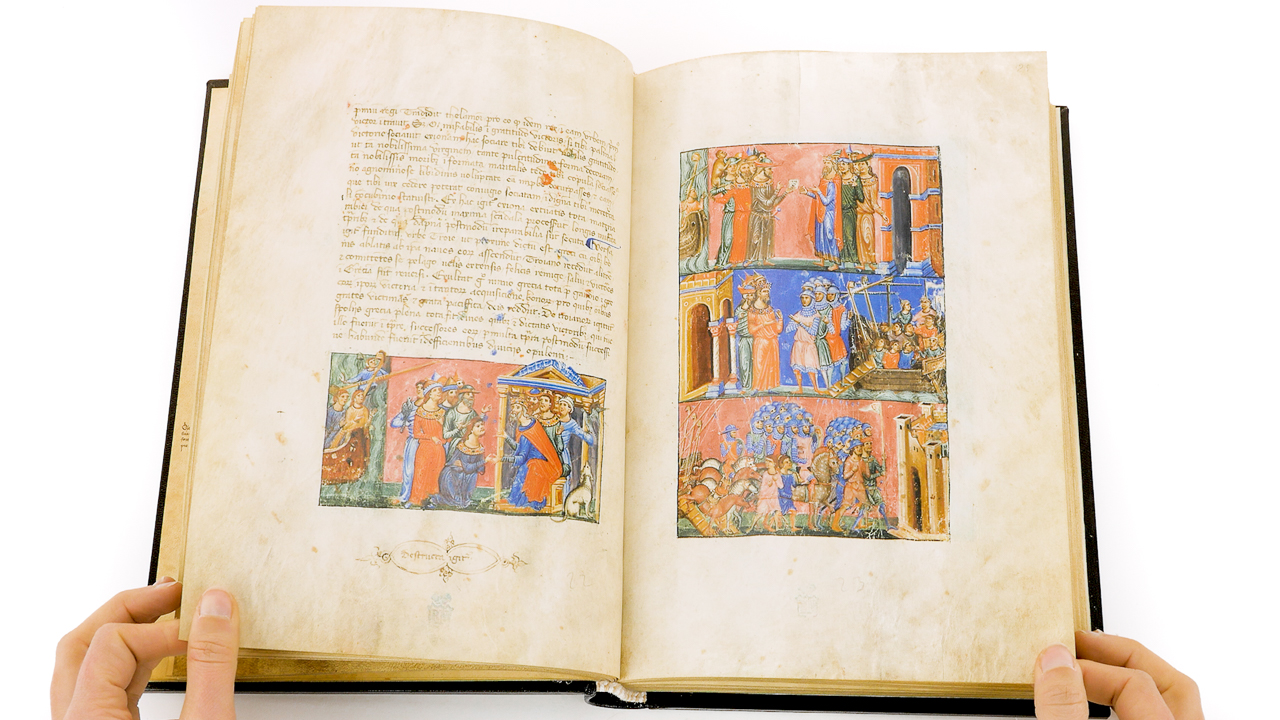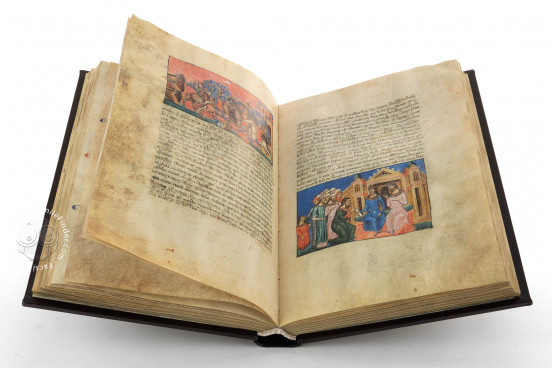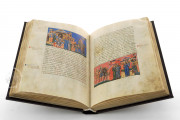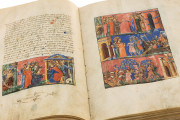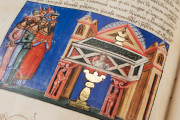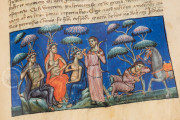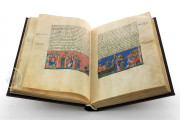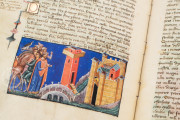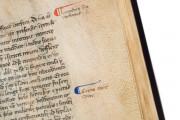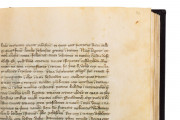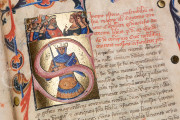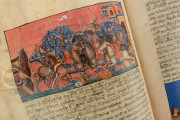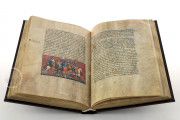The History of the Trojan People, also known as Historia Civitatis Troiane, was written and illuminated in Venice in the mid-fourteenth century. This colorful Italian manuscript gives an account of Troy's mythical past and features ninety-three beautifully illuminated illustrations in different sizes.
Venetian Origin
Written in Latin, this manuscript was probably crafted between 1340 and 1350 in a Venetian workshop, as its stylistic technique seems to suggest. Indeed, it echoes the typical Venetian technique of painting on rock crystal.
Hugo Buchtal, one of the most influential experts of MS 17805, claims a direct relationship between the manuscript and some works of Venetian painting. This fact, together with a clear influence of Paolo Veneziano's production, has played a major role in dating the codex.
Iconographic Apparatus
In addition to the ninety-three vivid miniatures generally placed on the upper or lower part of the sheet, the History of the Trojan People also features beautiful initials with burnished gold, two historiated initials (i.e. fols. 3r and 27r), and exquisite vegetal decorations located all around the text.
The manuscript contains the Latin version of the legend of Troy written a century earlier by Guido delle Colonne (1210-1287), a renowned Italian judge and writer mentioned by the sommo poeta in his De Vulgari Eloquentia.
Life of the Manuscript
It is unclear how the manuscript ended up in Spain, but some scholars believe that the sixteenth century Spanish campaigns in Italy might have something to do with it. What is certain is that in 1899 the manuscript became part of the collection of the National Library of Spain with the shelfmark MS 17805.
We have 1 facsimile edition of the manuscript "History of the Trojan People": Historia Civitatis Troianae facsimile edition, published by Piaf, 2017
Request Info / Price
